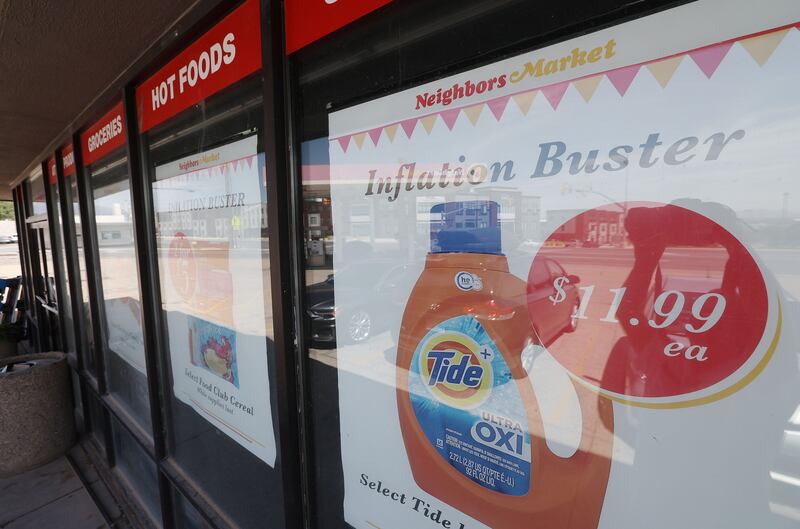A new U.S. Commerce Department report finds overall prices on consumer goods and services dropped a bit in July but the shift was mostly driven by lower gas prices.
The Personal Consumption Expenditure report released Friday found prices were up 6.3% in July over the same time last year, dropping a bit from June’s 6.8% year-over-year increases.
The report was released the same day that Federal Reserve Chairman Jerome Powell warned that the monetary body was likely to continue making aggressive hikes to its benchmark interest rate to quell inflation that’s been running at or near 40-year-highs for much of 2022.
Speaking from the Fed’s annual economic symposium in Jackson Hole, Wyoming, Powell said the slight downtick in the U.S. inflation rate in July fell far short of ample evidence that price increases are truly in a downward cycle. And, he warned consumers and business owners to expect more economic challenges in the near term to avoid worse consequences down the road.
“While higher interest rates, slower growth, and softer labor market conditions will bring down inflation, they will also bring some pain to households and businesses,” Powell said. “These are the unfortunate costs of reducing inflation. But a failure to restore price stability would mean far greater pain.”
Mixed signals: The more widely known Consumer Price Index, or CPI, report has been showing higher inflation than the Personal Consumption Expenditure data, with the CPI for July pegging inflation for that month at 8.5%, down from June’s 9.1%. A report from The Associated Press explained the differential is mostly driven by how the U.S. Labor Department computes its CPI inflation index, giving more weight to rents, which have soared this year.
The latest Personal Consumption Expenditure report found prices for goods increased 9.5% in July, with the cost of services up 4.6% from the same time last year. Food prices in July increased 11.9% from last year and energy prices have jumped 34.4% from July, 2021.
An unexpectedly robust jobs report earlier this month showed the nation finally recovered the 22 million jobs lost amid pandemic conditions as employers added 528,000 positions in July and annual wage growth was north of 5%. But, those bigger paydays are still falling well short of inflation-driven price increases and some reports show over 150 million Americans are struggling to keep up and living paycheck to paycheck.
The solid employment data, along with July inflation numbers, are fueling the Fed’s commitment to continuing its streak of hefty benchmark interest rate hikes as the monetary body struggles to strategically tamp down the economy and reduce record price increases on consumer goods and services.
What’s next? The next inflation update from the Labor Department will drop on Sep. 13 just a week ahead of the next scheduled meeting of the Federal Reserve board.
While Powell indicated last week that the Fed won’t retreat from its plan to continue steep upward adjustments to its benchmark rate in the near term, he did hint at a foreseeable policy shift.
“Our decision at the September meeting will depend on the totality of the incoming data and the evolving outlook,” Powell said. “At some point, as the stance of monetary policy tightens further, it likely will become appropriate to slow the pace of increases.”


